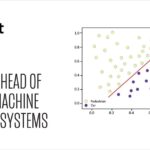Big data governance is changing fast with the rise of AI and ML. Here’s what you need to know:
- Key Challenges: Traditional frameworks struggle with AI/ML-specific needs like model tracking, bias detection, and decision transparency.
- AI/ML Impacts:
- Automated Data Quality: AI tools ensure accuracy and consistency in real-time.
- Predictive Compliance: ML flags potential regulatory issues early.
- Enhanced Security: AI detects and responds to threats instantly.
- Better Data Classification: AI automates sorting and labeling sensitive data.
- Solutions:
- Strengthen AI model security and training environments.
- Update compliance processes to include AI-specific regulations.
- Use automated tools for real-time monitoring and documentation.
Quick Takeaway: To stay ahead, organizations must modernize their governance frameworks to handle AI and ML systems effectively. Focus on transparency, security, and compliance to meet the demands of these technologies.
The Importance of AI Governance
Current Governance Framework Review
Traditional governance frameworks are well-suited for handling structured data but struggle to address the challenges posed by AI and ML systems. Below, we highlight key gaps in managing these advanced technologies.
Gaps in AI and ML Frameworks
Model Management and Versioning
- Limited tracking of model updates and training datasets.
- Weak documentation of decision-making processes.
- Lack of proper version control for deployed models.
Bias Identification and Correction
- Difficulty in spotting algorithmic bias in training datasets.
- Limited tools for monitoring fairness in AI decisions.
- Few measures to address and correct biases.
Transparency and Explainability
- Insufficient clarity around AI decision-making.
- Limited methods for interpreting model outputs.
- Poor documentation of how AI systems arrive at conclusions.
| Framework Component | Traditional Coverage | AI/ML Requirements |
|---|---|---|
| Data Quality | Basic validation rules | Real-time bias detection |
| Security | Static data protection | Adaptive model security |
| Compliance | Standard audit trails | AI decision tracking |
| Documentation | Static documentation | Ongoing model documentation |
Modernizing Legacy Frameworks
Addressing these gaps requires significant updates to outdated frameworks.
Improving Security
- Strengthen environments used for AI model training.
- Secure machine learning pipelines.
- Protect automated decision-making systems.
Adapting to New Compliance Needs
- Incorporate AI-specific regulations.
- Establish audit processes tailored to AI models.
- Document automated decision-making comprehensively.
Integrating Automation
- Deploy systems that monitor AI activities automatically.
- Enable real-time compliance checks.
- Enforce policies dynamically as systems evolve.
To effectively manage AI and ML systems, organizations need to transition from static, rule-based governance to systems that are adaptive and capable of continuous learning. Key priorities include:
- Real-time monitoring of AI systems.
- Comprehensive management of AI model lifecycles.
- Detailed documentation of AI-driven decisions.
- Flexible compliance mechanisms that evolve with technology.
These updates help organizations maintain control over both traditional data and AI/ML systems while meeting modern compliance and security demands.
sbb-itb-9e017b4
Implementing AI and ML Governance
To address the challenges of traditional frameworks, it’s important to adapt governance strategies for AI and ML. These steps can help ensure data quality, maintain ethical standards, and meet the unique demands of AI/ML systems.
Data Quality Management
Use automated tools to maintain high data quality across all types. Here are a few ways to get started:
- Track the entire data lifecycle, from its source to any transformations.
- Set up a dashboard to monitor data quality in real time.
- Continuously measure and evaluate quality metrics.
| Quality Dimension | Traditional Approach | Updated Approach |
|---|---|---|
| Accuracy | Manual checks | Automated pattern recognition |
| Completeness | Basic null checks | Predictive analysis for missing values |
| Consistency | Rule-based validation | AI-driven anomaly detection |
| Timeliness | Scheduled updates | Real-time validation |
Security and Privacy Updates
Security Measures:
- Use end-to-end encryption for model training data.
- Implement access controls specifically designed for AI/ML systems.
- Monitor models for unusual behavior.
- Protect deployment channels to prevent tampering.
Privacy Measures:
- Incorporate differential privacy techniques during training.
- Use federated learning to avoid centralized data storage.
- Conduct regular privacy impact assessments.
- Limit the amount of data required for training to reduce exposure.
Handling security and privacy issues is crucial, but don’t overlook the importance of embedding ethical practices into your governance model.
AI Ethics Guidelines
Create an AI ethics review board with responsibilities such as:
- Examining new AI/ML projects for ethical compliance.
- Regularly updating ethical guidelines to reflect new standards.
- Ensuring alignment with current regulations.
Key Ethical Principles:
- Provide detailed, transparent documentation for model decisions and training processes.
- Ensure fairness in how models operate and make decisions.
- Clearly define who is responsible for the outcomes of AI systems.
| Ethical Focus | Implementation Strategy | Monitoring Method |
|---|---|---|
| Bias Prevention | Test models before deployment | Ongoing monitoring |
| Explainability | Require thorough documentation | Conduct regular audits |
| Accountability | Assign clear ownership | Review performance periodically |
| Transparency | Share documentation publicly | Gather feedback from stakeholders |
AI/ML Compliance Requirements
Ensuring compliance for AI and ML systems involves tackling both technical and regulatory challenges. It’s important to establish clear processes that promote transparency in AI decision-making while aligning with industry regulations. This approach helps governance systems stay aligned with advancements in AI and ML.
AI Decision Transparency
To make AI systems more understandable, organizations should focus on the following:
- Automated logging of all model decisions and updates
- Using explainability tools like LIME and SHAP to clarify outputs
- Maintaining version-controlled audit trails for tracking model changes
- Implementing data lineage practices to trace data sources and transformations
For high-risk AI applications, additional measures include:
- Detailed documentation of training data, parameters, and performance metrics
- Version control and approval workflows for updates
- Informing users about the AI system’s presence and role
- Setting up processes for users to challenge automated decisions
These steps form the foundation for compliance rules tailored to specific industries.
Industry-Specific Rules
Beyond transparency, industries have unique compliance needs that refine how AI/ML systems should operate:
- Financial Services: Ensure model risk management aligns with the Federal Reserve‘s SR 11-7. Validate AI-driven trading algorithms and maintain comprehensive risk assessment documentation.
- Healthcare: Follow HIPAA for patient data protection, adhere to FDA guidelines for AI-based medical devices, and document clinical validations.
- Manufacturing: Meet safety standards for AI-powered automation, maintain quality control for AI inspection systems, and assess environmental impacts.
| Industry | Primary Regulations | Key Compliance Focus |
|---|---|---|
| Financial | SR 11-7, GDPR | Model risk management, data privacy |
| Healthcare | HIPAA, FDA guidelines | Patient safety, data security |
| Manufacturing | ISO standards | Safety, quality control |
| Retail | CCPA, GDPR | Consumer privacy, data handling |
To meet these requirements, organizations should:
- Conduct regular audits of compliance standards
- Update internal policies to reflect current regulations
- Train employees on compliance responsibilities
- Keep detailed records of all compliance activities
When rolling out AI/ML systems, use a compliance checklist to stay on track:
- Risk Assessment: Identify potential compliance risks.
- Documentation Review: Ensure all necessary records and policies are in place.
- Testing Protocol: Confirm the system meets regulatory requirements.
- Monitoring Plan: Establish ongoing oversight procedures.
For more resources on big data governance and AI/ML compliance, visit platforms like Datafloq for expert insights.
Conclusion
Summary
As outlined earlier, the rise of AI and ML brings new challenges in maintaining data quality and ensuring transparency. Big data governance frameworks are evolving to address these needs, reshaping how data is managed. Today’s frameworks must strike a balance between technical capabilities, ethical considerations, security demands, and compliance standards. The integration of AI and ML has highlighted issues like model transparency, data quality oversight, and industry-specific regulations. This shift calls for practical, step-by-step updates in governance practices.
Implementation Guide
Here’s a practical approach to updating your governance framework:
-
Framework Assessment
- Review your current governance structure to identify gaps in data quality, security, and compliance processes.
- Set baseline metrics to measure progress and improvements.
-
Technology Integration
- Introduce automated tools to monitor data quality effectively.
- Implement systems for managing version control and tracking AI/ML models.
- Establish audit logging mechanisms to support transparency and compliance.
-
Policy Development
- Create clear guidelines for developing and deploying AI models.
- Set up processes to review the ethical implications of AI applications.
- Define roles and responsibilities for managing AI governance.
These steps aim to address the shortcomings in current AI/ML governance practices. By building robust frameworks, organizations can foster innovation while maintaining strict oversight. For further insights and resources, platforms like Datafloq offer helpful guidance for implementing these strategies.
Related Blog Posts
- Big Data vs Traditional Analytics: Key Differences
- Data Privacy Compliance Checklist for AI Projects
- Ultimate Guide to Data Lakes in 2025
The post How Big Data Governance Evolves with AI and ML appeared first on Datafloq.


























